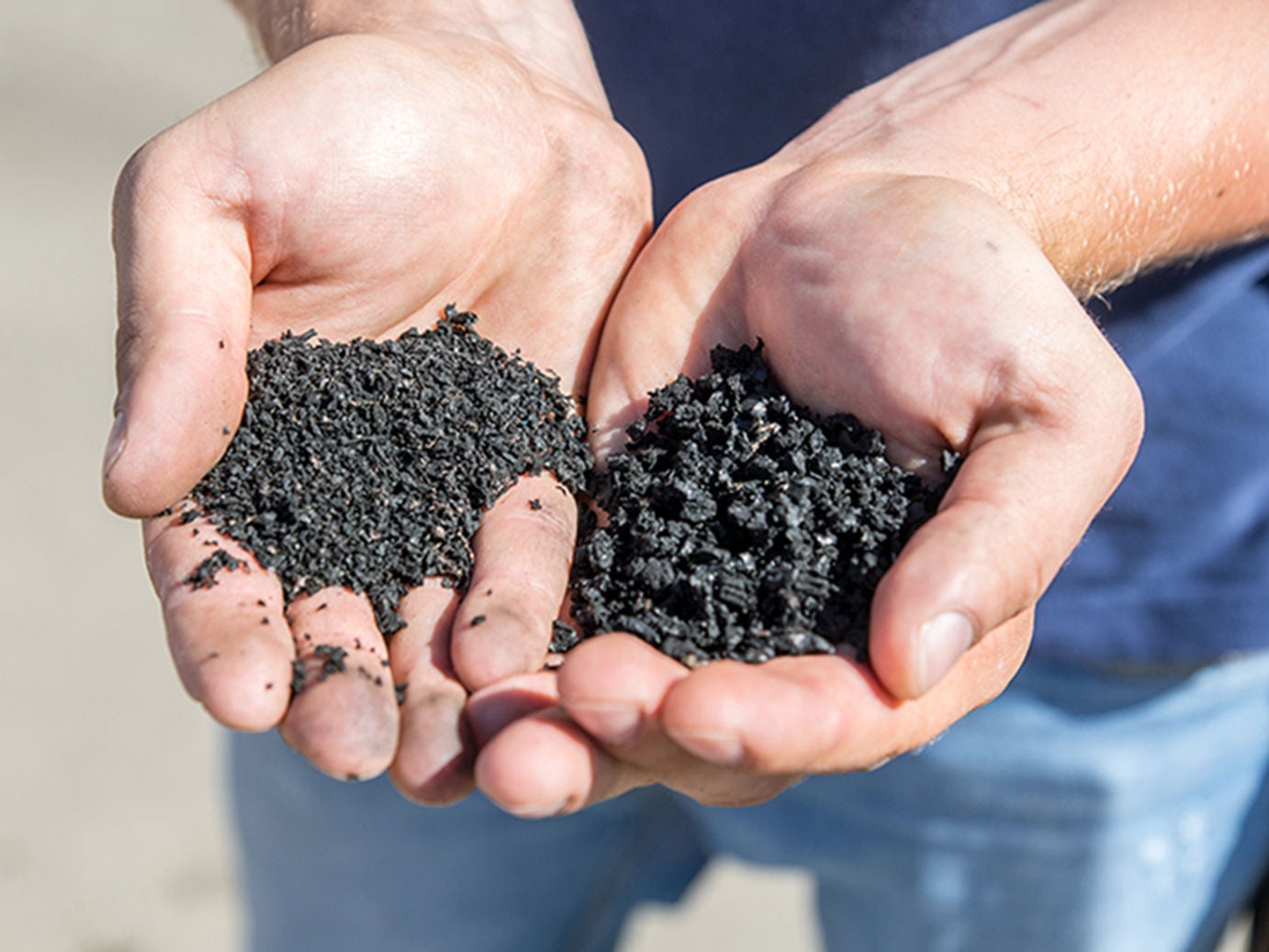
We use different tyres depending on the season and environment. These differences might be obvious, for example in the tread depth. However, they might be harder to spot or even go unnoticed in other areas. Take the tyre rubber compound, for example: Although different compounds are hard to distinguish from one another, they have a significant impact on tyre properties.
So, what exactly is a tyre made of?

A closer look at the rubber compound of tyres
First of all, it is important to know that rubber compounds vary from manufacturer to manufacturer. These compounds vary between the different tyre sizes and types and always depend on the preferred driving characteristics. Tyre material consists of the following elements, in varying quantities depending on use:
Rubber
Natural and synthetic rubber (also known as polymer) are the main components of a car tyre. Depending on the variety, these materials provide a high level of slip resistance and, after processing, the preferred elasticity. Apart from that, rubber has the disadvantage that it wears out quickly and can harden at low temperatures or become soft at high temperatures.
Natural rubber is harvested from rubber trees on large plantations. In the process, the bark of the tree is cut and the milky sap is collected. You might know the milky sap as latex. In contrast, synthetic rubber offers the advantage that its properties can be modified. As the manufacturer, when selecting materials we can ensure that your tyres will get you safely through any weather.
Fillers
In general, fillers are added to the rubber. These fillers can be carbon black, silica, carbon or chalk. They bind the rubber and make it more resistant to wear, as rubber on its own can crumble, particularly as a result of breaking. We use fillers to counter this effect and increase the mileage of your tyres. However, this can harden the rubber compound a little.
Fillers are also the reason for the colour of tyres. Carbon black was the first filler to be used and gave the tyres their colour. However, coloured tyres never made their breakthrough, even when other fillers and therefore other colours came into play later on. That is why tyres are still black to this day.
In contrast to the early days, we use silica in the compound for modern tyre manufacturing. Silica is the name given to silicic acid salt. This substance binds the rubber particularly well with the sulphur, which is essential for the vulcanisation of the tyres later on. During this process, the tyre material is heated to combine the chemical bonds of the individual substances to create elastic rubber. This allows us to provide good mileage without having to sacrifice other properties.

Plasticiser
Plasticisers are needed to ensure that the tyre gives you a positive and safe feeling while driving, even in snow and rain. These oils and resins make the tyre flexible and improve the grip of the material. For you, the driver, this means that plasticisers improve rolling resistance. Oils also add to the slip resistance of the tyre. That's why more oils are used in winter tyres than in summer tyres; plasticisers prevent the rubber from hardening at low temperatures.
We explain why winter tyres are particularly effective at temperatures below 7°C.
More about tyre material
In addition to the main components of rubber, fillers and plasticisers, chemicals, such as sulphur as mentioned above, and antioxidants are also used in tyres. These also affect driving behaviour. The development of a new rubber compound involves constantly balancing the materials. A complex process that varies from tyre to tyre and the material used.
Related Topics
-
 2023/03/31What's the difference between summer tyres and winter tyres? Find out more about the special properties of these two Uniroyal tyre types.Difference between summer and winter tyresRead more
2023/03/31What's the difference between summer tyres and winter tyres? Find out more about the special properties of these two Uniroyal tyre types.Difference between summer and winter tyresRead more -
 2023/03/31Passenger car tyres are products of complex engineering. Learn more about the components that make up modern car tyres.Tyre componentsRead more
2023/03/31Passenger car tyres are products of complex engineering. Learn more about the components that make up modern car tyres.Tyre componentsRead more -
 2023/03/31Tyre care: We explain what to look out for and the best way to clean your tyres before storage. Find out more here now!Tyre careRead more
2023/03/31Tyre care: We explain what to look out for and the best way to clean your tyres before storage. Find out more here now!Tyre careRead more